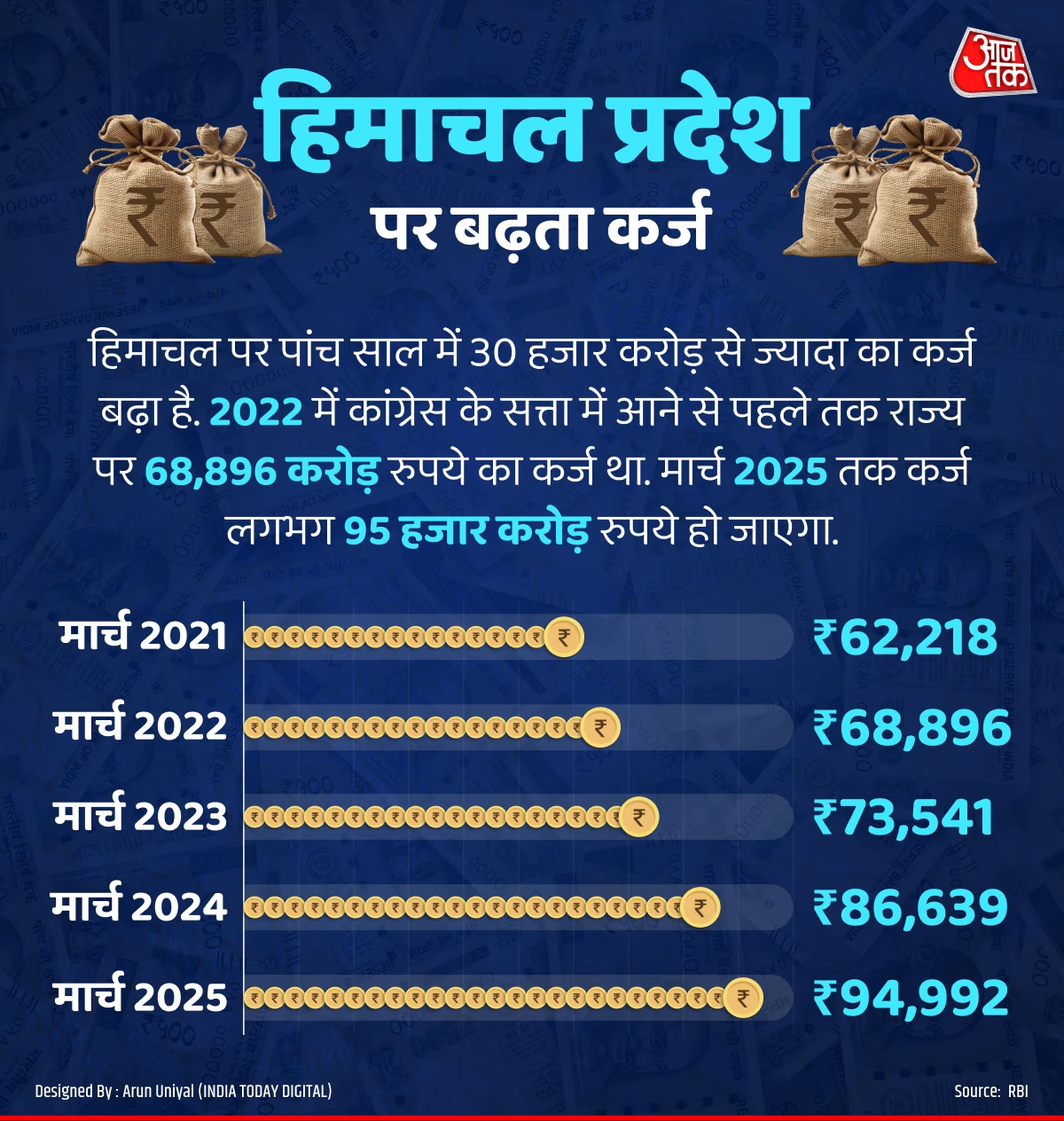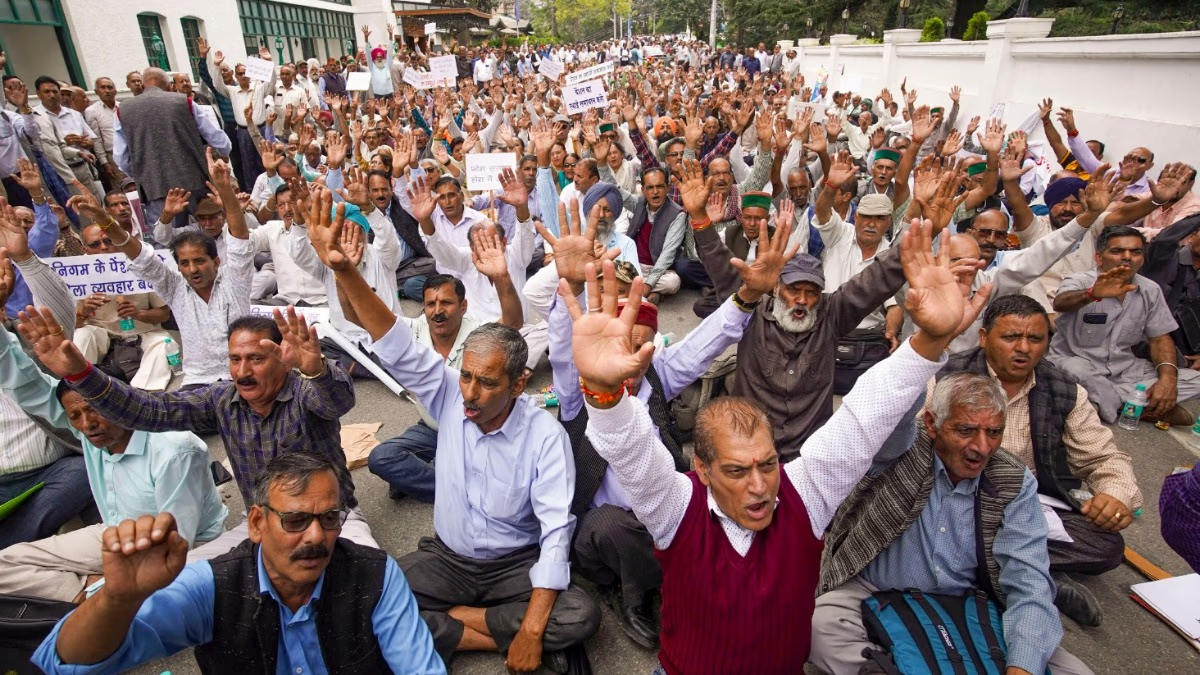The debt-ridden Himachal Pradesh government has implemented a new decision. Now, the salaries of government employees and pensions of retired employees in Himachal Pradesh will not arrive on the 1st of the month. Instead, from now on, salaries will be given on the 5th, and pensions will be distributed on the 10th.
For the first time in Himachal’s history, salaries and pensions were not issued on the 1st of the month, leading to opposition outcry. On Wednesday, the opposition raised the issue in the assembly, to which Chief Minister Sukhvinder Sukhu responded that salaries would be given on the 5th and pensions on the 10th henceforth.
Chief Minister Sukhu also claimed that not issuing salaries and pensions on the 1st of the month would save the government 360 million INR annually.
What's the Math Behind This?
Himachal has around 200,000 government employees and 150,000 pensioners. Monthly, 12 billion INR is spent on salaries and 8 billion INR on pensions. Combined, this amounts to 20 billion INR every month solely on salaries and pensions.
Chief Minister Sukhu explained that the government has to borrow to pay these salaries and pensions. This borrowing incurs an interest of 30 million INR every month. By delaying the payment by a few days, an annual saving of 360 million INR can be achieved.
CM Sukhu mentioned that this change is only temporary, and eventually, salaries and pensions will be disbursed on the 1st of the month.
Read also:
How Will Salaries Be Paid Without Borrowing?
Now, the question arises: if Himachal will not take loans, how will it pay the salaries and pensions? The funds for these payments will come from the central government.
CM Sukhu mentioned that on the 6th of each month, the Revenue Deficit Grant (RDG) is received, and on the 10th, the state's share of the central taxes arrives. Himachal government receives 5.2 billion INR from the Revenue Deficit Grant and 7.4 billion INR from the central taxes every month.

Source: aajtak
Why Money From the Center?
The central government provides Revenue Deficit Grants to help state governments reduce their revenue deficits. This provision is made under Article 275 of the Constitution.
The Finance Commission decides how much grant states will receive from the central government. Currently, the grants are given based on the recommendations of the 15th Finance Commission, which has made recommendations for grants from 2021-22 to 2025-26. The Finance Commission assesses the revenue and expenditure of states and announces grants accordingly.
The central government also shares a portion of its tax revenue with states. Initially, states used to receive 32% of the central tax revenue. The 15th Finance Commission increased this share to 41%. Each state's share has been decided by the Finance Commission. For example, Himachal Pradesh gets 0.83% of the central tax revenue, while Uttar Pradesh gets the highest share at 17.93%, followed by Bihar with 10.05%.
How Much Money Do Governments Get?
In the 2024-25 budget, the central government allocated 12.47 trillion INR for sharing tax revenue with states. In the 2023-24 budget, it was 11.04 trillion INR. By 2024-25, the Himachal government will receive 10.352 billion INR from the central taxes.
Also, based on the recommendations of the 15th Finance Commission, states will receive approximately 3 trillion INR as Revenue Deficit Grant from 2021 to 2026. However, not all states receive this grant. States like Uttar Pradesh, Madhya Pradesh, Gujarat, Chhattisgarh, and Jharkhand do not receive this grant.
According to the recommendations of the 15th Finance Commission, Himachal government will receive 371.99 billion INR from 2021 to 2026. The government has already received 102.49 billion INR in 2021-22, 93.77 billion INR in 2022-23, and 80.58 billion INR in 2023-24. However, based on the Finance Commission's recommendations, Himachal received a total of 91.15 billion INR in 2023-24.
Read also:
Will These Measures Be Effective?
The debt of the Himachal government continues to rise. According to a Reserve Bank report, as of March 2022, Himachal Pradesh had a debt of 690 billion INR. By March 2024, this debt had risen to 866 billion INR, and it is expected to reach 950 billion INR by March 2025.
40% of the Himachal government's budget is spent on salaries and pensions, and about 20% is spent on repaying loans and interest. One reason for the growing debt is attributed to the freebies distributed by the Congress government. Additionally, after coming to power, the Congress government implemented the Old Pension Scheme, increasing expenditures further. For instance, the Himachal government spent 63.99 billion INR on pensions in 2021-22, while in 2022-23, the expenditure exceeded 90 billion INR. Similarly, the salary expenditure increased from 128 billion INR in 2021-22 to over 160 billion INR in 2022-23.
The Himachal government faced a further setback when the central government reduced the borrowing limit. Initially, the state could borrow up to 5% of its GDP, but now it can only borrow up to 3.5%. This means that while the state could previously borrow up to 145 billion INR, it can now only borrow 90 billion INR.
To alleviate this debt burden, CM Sukhu announced last week that the Chief Minister, ministers, and parliamentary secretaries would forego their salaries for the next two months. This decision is expected to save around 8.5 million INR.
In summary, the Himachal government is making every effort to reduce its debt burden and save money in every possible way.




